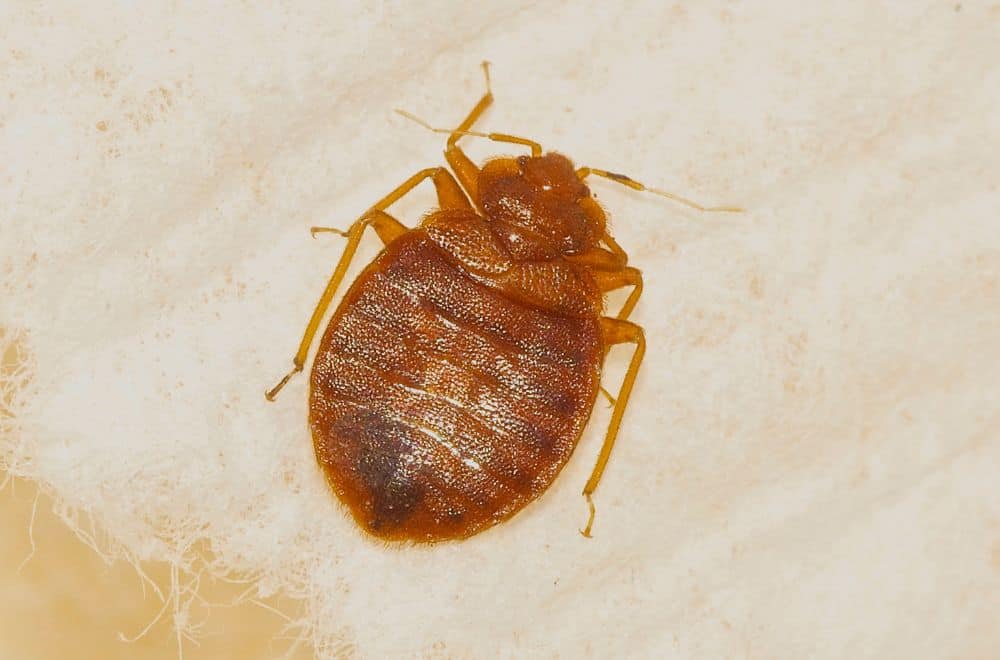You may have heard of the swallowtail butterfly … it’s as big as the bird and has an equally pointy tail. But what is a swallow bug? This small insect is often mistaken for a bedbug and it’s quite the doppelganger. Let’s learn more about this pest and whether we should fear it.
How to Identify a Swallow Bug
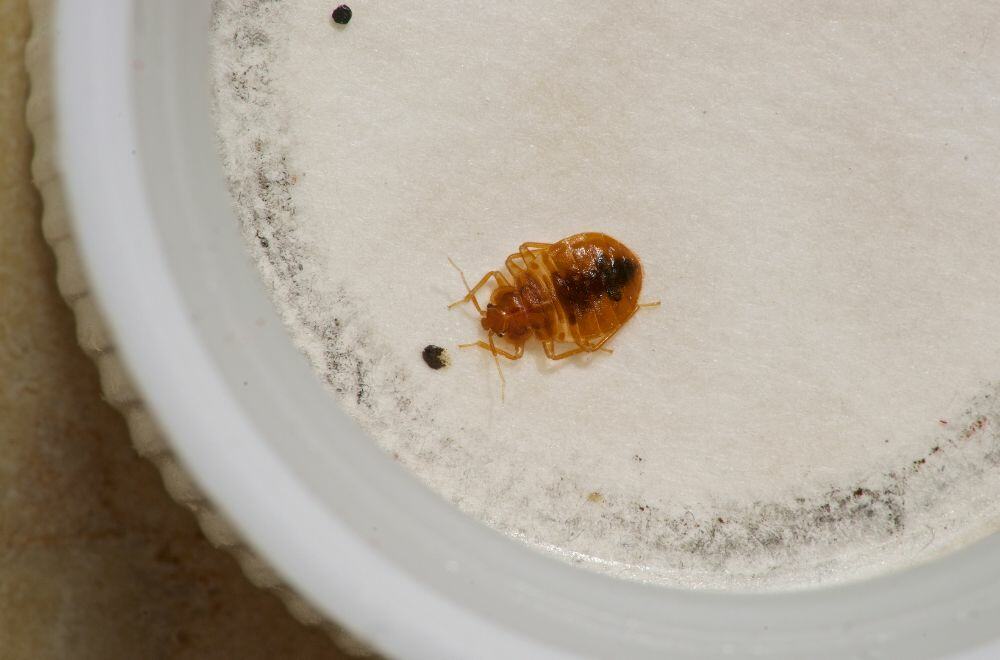
A swallowtail butterfly gets its name from its swallow-like tail. But a swallow bug is named after its favorite diet and nesting spot. As we mentioned, they look a lot like bedbugs, except they drink the blood of swallows so you’ll mostly find them hanging out in swallow nests.
These bugs are slightly less than half a centimeter – they measure 3/16 of an inch or 48mm. They have flat oval bodies and are generally greyish-brown. Nymphs (baby swallow bugs) are lighter, usually beige or tan, but you’ll spot their tell-tale reddish tint after blood meals.
You wouldn’t ordinarily find swallow bugs in your house. But if you’re involuntarily leasing your space to swallows, their parasites may filter into the human areas as well. This can also happen if you’ve built birdfeeders and birdhouses to attract swallows, martins, and other birds.
Swallows are attracted to your garage, barn, storage shed, or outbuilding, so these are likely spots for swallow bugs. The birds prefer dark, secluded areas, under the eaves or in hidden ledges. This way, they stay warm when it’s cold, cool when it’s hot and safe from predators.
For the record, swallow bugs don’t typically bite people. But if their main host – the bird itself – migrates, you may have a problem. The swallow bugs will stay in the empty nest for a while and if anyone comes around to clean or destroy the nest, the bugs may snack on you!
Swallow Bugs vs. Bed Bugs
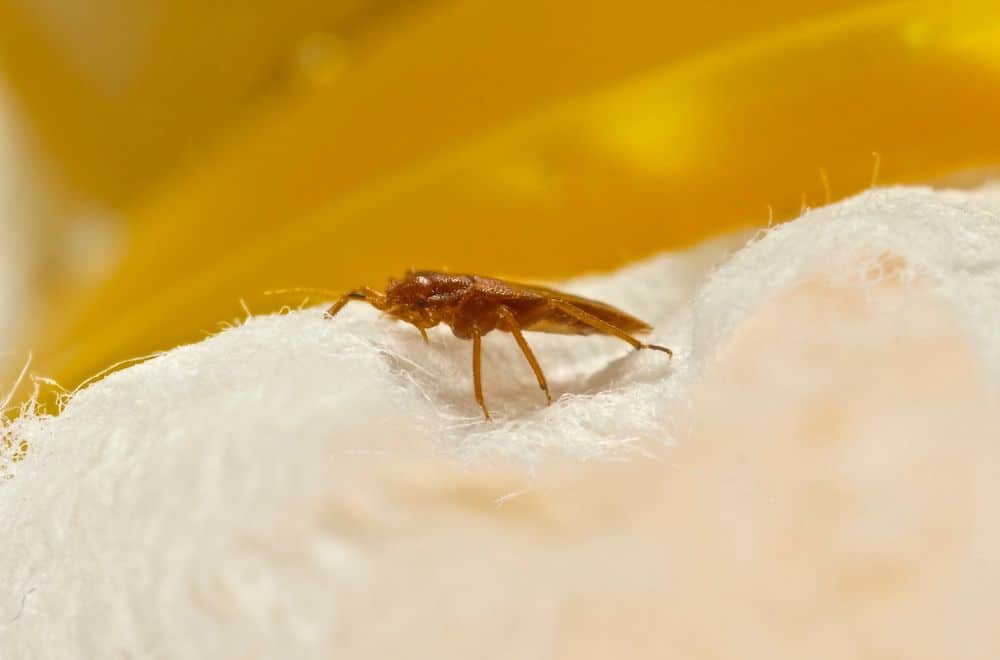
Visually, there’s not much difference between swallow bugs and bedbugs. They’re both small, oval ‘vampire bugs’ with grey or brown bodies that need blood to reproduce. But bedbugs can get blood all year round while swallow bugs feed seasonally. Here are a few more variations:
- Swallow bugs live in swallow nests so you’ll spot them closer to the ceiling.
- They have fine hair on their bodies and they don’t breed in your bed.
- The antennae of a swallow bug have longer segments of equal length at the tips.
- They mostly pop up during the winter once the swallows have flown south.
- They lay 30 eggs at a time while bedbugs can lay up to 5 eggs every day.
- A bedbug egg can hatch in about a week while a swallow bug egg is closer to a month.
- Swallow bugs can live 2 to 3 years while bedbugs typically live for one.
- Since swallow bugs only come out for food, you won’t see them as often as bedbugs.
For the record, swallow bugs aren’t the only insects that get mistaken for bedbugs. Bat bugs fall in this category too. The three bugs are related but are adapted to target different hosts. Female swallow bugs lay eggs once a year – about 100 per lifetime. Bedbugs can get to 500!
When Do Swallow Bugs Bite People?
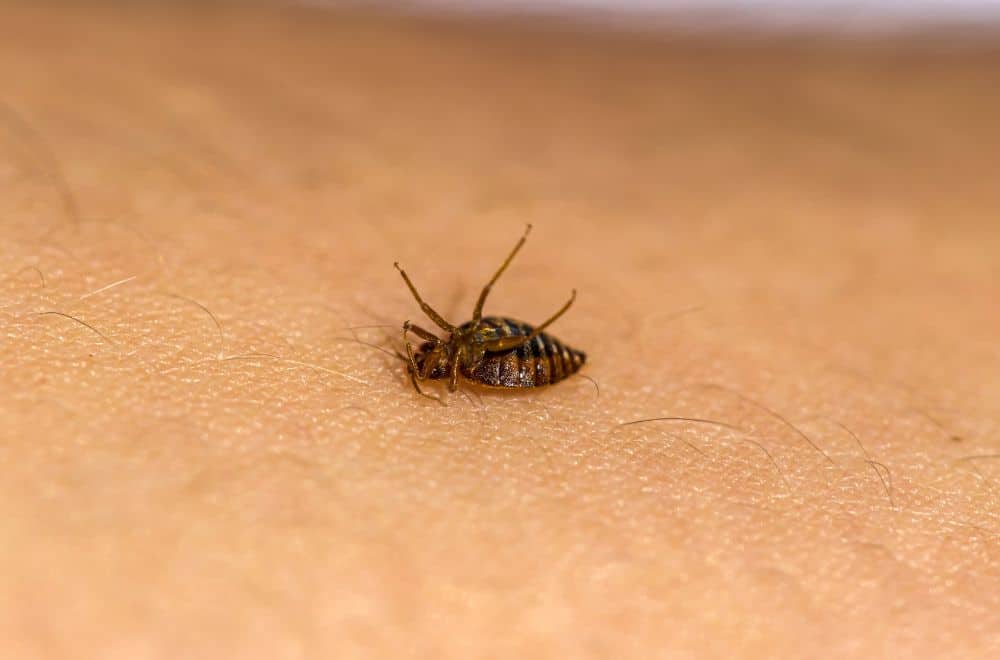
Swallow bugs will only bite humans if they can’t find birds nearby. Since these bugs can go a year without food, and since swallows migrate annually, swallow bugs can survive through ‘intermittent fasting’ for up to three years, snacking on human blood during winter months.
When the birds fly south, the bugs can slip down to human quarters. You won’t feel the bite, and your reaction will vary. For some people, the bite has no effect. On others, you might get a bump that’s similar to a mosquito bite while others can develop a rash or allergic response.
This effect is triggered by swallow bug saliva that mixes with your blood as it feeds. This can cause itchy swellings on your skin that disappear in a day or two, just like a mosquito bite. It doesn’t cause any infections and swallow bugs don’t drink enough blood to do any damage.
But you may still be creeped out to see them crawling around your bedroom or your skin. Also, while humans and adult swallows may not suffer much, nestlings are smaller and more vulnerable, so swallow bug bites can kill them, especially for large swallow bug infestations.
Interestingly, you can get in trouble for poking into swallow nests that have eggs or young birds, but you’re allowed to sabotage young bird couples during construction. It’s legal to destroy nests while the birds are building them, as long as they haven’t started a family yet.
The Lifestyle of a Swallow Bug
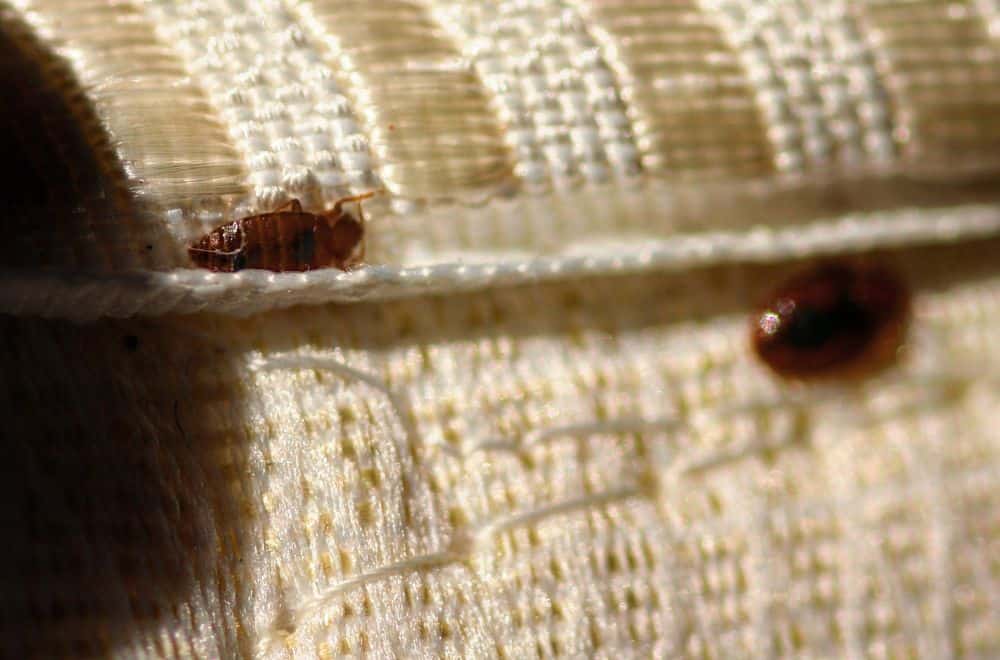
Swallows are seasonal birds and swallow bugs follow the patterns of their hosts. In warmer months, you won’t see any bugs because they’re fat and fed inside the nests. Towards winter, the smarter ones may gorge themselves in preparation for the cold incoming leaner seasons.
Then in the winter, most bugs go dormant and stay hidden. But a few of the unprepared ones may sneak down into human dwellings to feed. Otherwise, dormant swallow bugs will pop up towards the end of winter as they anticipate the return of their suntanned flying meal tickets.
During this period, some of the swallow bugs may jumpstart their digestion and revive their biology by sipping some human blood. Swallow bugs lay 20 to 30 eggs that hatch in 30 to 40 days. But because human blood isn’t ideal, these swallow bugs can’t reproduce as efficiently.
This means essentially – apart from the psychological discomfort and hygiene concerns – swallow bugs don’t bother humans much. But if you’re purposely rearing wild swallows and deliberately encouraging them to nest within your space, you need to manage their parasites.
Since bedbugs show up all year round and swallow bugs are mostly winter visitors – at least for humans – use the chilly season as an opportunity to eliminate them. After all, the birds will be gone, so you can think of it as ‘avian spring cleaning’ to prep for their homecoming.
How to Get Rid of Swallow Bugs
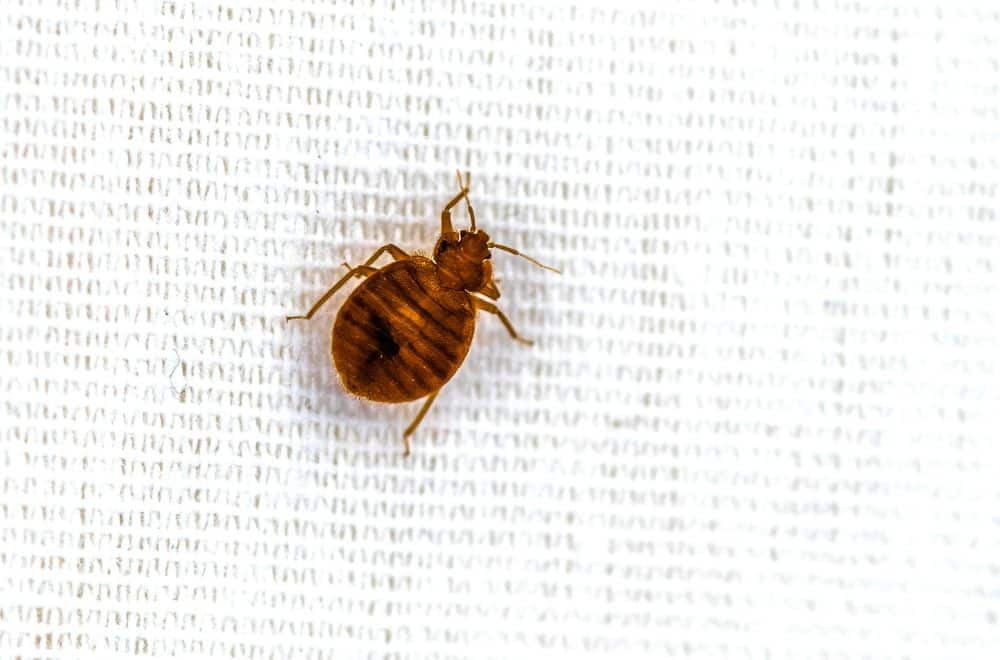
Before you tackle any swallow bugs, you need to be sure what they are. Grab some eggs or live insects and take them to a pest expert, or invite the exterminator for a site visit. Some offer no-obligation free consultations and quotations but double-check to avoid hidden fees.
Since swallow bugs have a biology that’s tailored to feed on birds, they don’t do as well when they’re forced to feed on humans. Their lifespans get shorter, they lay fewer eggs, and most of the babies won’t survive to reach adulthood. This makes them a lot easier to get rid of.
The surest way to stop swallow bug cycles is to chase the swallows away and prevent them from nesting around you in future. You can do this by finding and blocking their top entry points. Swallows access your house by flying through holes as small as 5cm high by 20cm.
Once the swallows are gone, destroy their nests and clean the surrounding area to remove any straggling bugs, eggs, or casings. Do this while the swallows are on their ‘winter vacation’ otherwise they’ll just build new nests overnight. Also, the bugs will now be weak and hungry.
Their ‘low blood sugar’ will make them easier to conquer. Besides, it’s illegal to mess with active swallow nests with bird eggs or hatchlings. Be careful during the extraction, since bugs could slip into your clothes and hair. Wear protective overalls and keep your skin covered.
Long-Term Swallow Bug Management
Bedbugs and their cousins are hardy creatures that can go months without feeding. In the lab, swallow bugs have been known to survive a year without a blood meal. So once you remove the nests and destroy the eggs, block any holes where new swallows may enter.
If a bird returns and finds even a single dormant swallow bug, this insect might just pick up where it left off. Apart from treating nests, caulk any cracks, leaks, or gaps these bugs might use to access your house. If they get in, they’ll nibble on you until the swallows come back.
Check around windows, doors, and electric outlets where gaps and crevices go unspotted. After filling these gaps, dust the areas with residual insecticide dust or sprays. Have this done by a professional since you don’t want to contaminate any children or pets in the area.
Silica aerogel is a helpful option too. It will cling to the hairy bodies of the swallow bugs and dehydrate them, which also suffocates the bugs in the process. You need a very fine layer of this product. Exterminators are a safer option since gel can be toxic to humans and animals.
Use products that are specified for swallow bugs, since bedbug remedies don’t always work. But you can experiment with natural repellents like essential oils, particularly rosemary and garlic, though effects are limited and short-lived. Also, bug bombs just send bugs into hiding.
You can try bedbug techniques like steam cleaning to destroy any swallow bug eggs or remnants, but residual pesticides are the surest option. Still, it doesn’t hurt to vacuum those areas after exterminators are done. Do this every week or two throughout the winter lull.
Do you know any other swallow bug trivia? Share your knowledge in the comments section!
